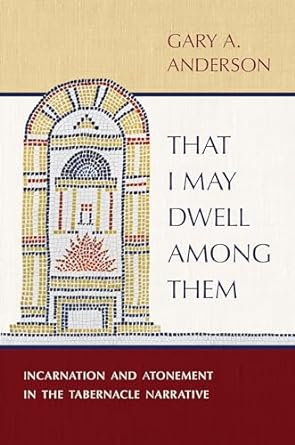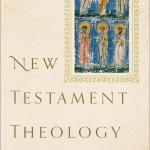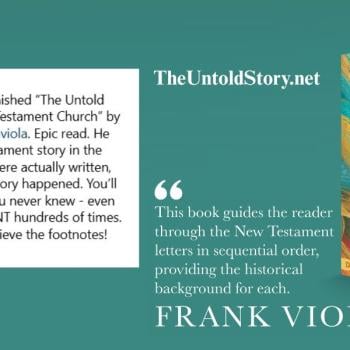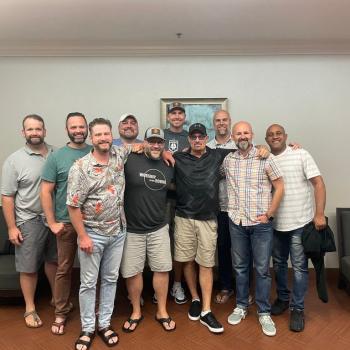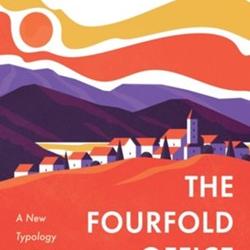That I May Dwell among Them: Incarnation and Atonement in the Tabernacle Narrative is a new book by Gary Anderson.
I was interested in this book because the tabernacle and temple are two key pieces of the Eternal Purpose that I’ve spoken and written about often.
Anderson’s book is scholarly, and it’s one of the works I’m citing in my revised and expanded version of The Untold Story of the New Testament Church, which is forthcoming.
Well written, here’s a description from the publisher:
What does Israel’s tabernacle mean for Christians today?
The Tabernacle Narrative comprises passages in Exodus and Leviticus that detail the construction, furnishing, and liturgical use of the tabernacle. Given its genre and style, the narrative is often passed over by those reading Scripture for theological insight.
But what can these complex passages reveal about Christ? Gary Anderson shows how these passages shed light on incarnation and atonement both in ancient Israel’s theology and in Christian theology. Anderson explains how the chronology of the narrative reflects sacred time, how the Israelites saw divine features in the physical aspects of the tabernacle, and how Isaac’s sacrifice foreshadowed the sacrificial rite revealed to Moses at Mt. Sinai.
Ultimately, Anderson shows how the Old Testament can deepen our understanding of the gospel. For Athanasius and many church fathers, God’s “indwelling” in the tabernacle offers a unique witness to the nature of incarnation, supplementing the story told in the gospels.
Likewise, careful analysis of the purpose of sacrifice at the tabernacle clarifies the purpose of Christ’s passion. Far from connoting penal substitution, sacrifice in the Old Testament demonstrates self-emptying as an antidote to sin. Theologians, pastors, and serious readers of the Bible will appreciate how Anderson’s canonical and literary analysis of the Tabernacle Narrative illuminates Christian theology.
Excerpt from Chapter 1: The Place of the Tabernacle Narrative in the Christian Bible
Why study the Tabernacle Narrative? Next to the genealogies, it is regarded by most readers as the most tedious portion of the entire Bible. Yet embedded within this story are two supremely important theological ideas—God’s decision to dwell among the people Israel and be served by them at his altar.
Both of these ideas are central to Israelite religion, but they also inform the core doctrines of the early church. In fact, one of the surprising features of my own research has been how productive these chapters were in shaping how Christians have thought about the incarnation and the atonement.
Perhaps the best evidence for the influence of the Tabernacle Narrative on the idea of the incarnation is found in the Prologue to John’s Gospel: “And the Word became flesh and lived among us, and we have seen his glory, the glory as of a father’s only son, full of grace and truth” (1:14). The expression “to live among us” comes from the Greek verb skēnoō, which literally means “to pitch a tent.” As Raymond Brown, author of perhaps the most important modern commentary on the Gospel of John, observes:
The theme of “tenting” is found in Exod 25:8–9 where Israel is told to make a tent (the Tabernacle—skēnē) so that God can dwell among His people; the Tabernacle became the site of God’s localized presence on earth. . . . When the Prologue proclaims that the Word made his dwelling among men, we are being told that the flesh of Jesus Christ is the new localization of God’s presence on earth, and that Jesus is the replacement of the ancient Tabernacle.
But it is not just the act of indwelling that links the prologue to the Tabernacle Narrative. The Gospel adds that its purpose is to make the glory of God visible (“the Word became flesh . . . and we have seen his glory”). This notion of visibility is derived from the appearance (or “theophany”) of the God of Israel at the close of Exodus when the construction of the tabernacle was finished.
Then the cloud covered the tent of meeting, and the glory of the Lord filled the tabernacle. Moses was not able to enter the tent of meeting because the cloud settled upon it, and the glory of the Lord filled the tabernacle. (Exod. 40:34–35)
The importance of the glory becoming visible is emphasized at several other key moments in the history of Israel. The dedication of the temple by King Solomon is accompanied by a visible display of divine glory (1 Kings 8:10–11). And just prior to the Babylonian invasion of Jerusalem and destruction of the temple, that same glory exits the city (Ezek. 11:23).
Afterward, when Ezekiel sees the vision of a new Jerusalem, the account of its construction concludes with the glory of God entering the complex and filling the temple (44:4). “Thus, it is quite appropriate,” Brown concludes, “that, after the description of how the Word set up a Tabernacle among men in the flesh of Jesus, the Prologue should mention that his glory became visible.”


